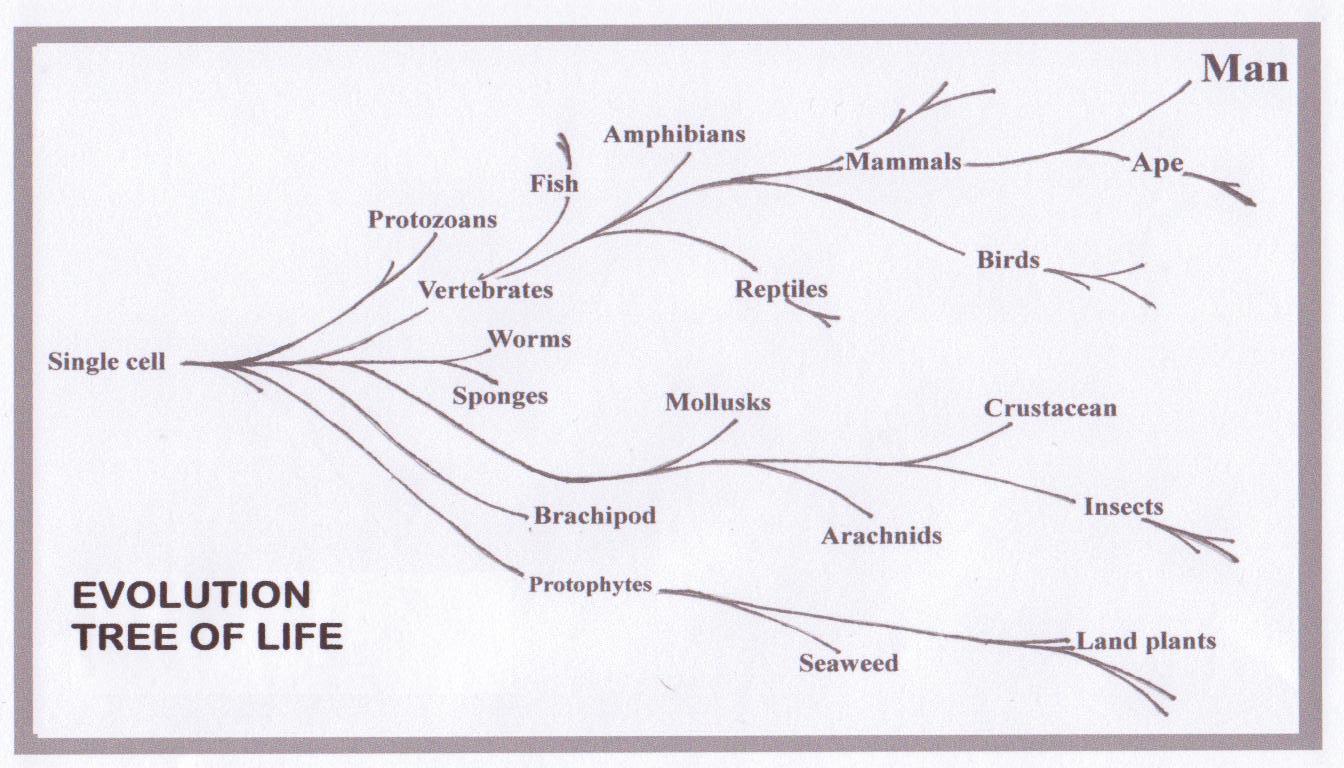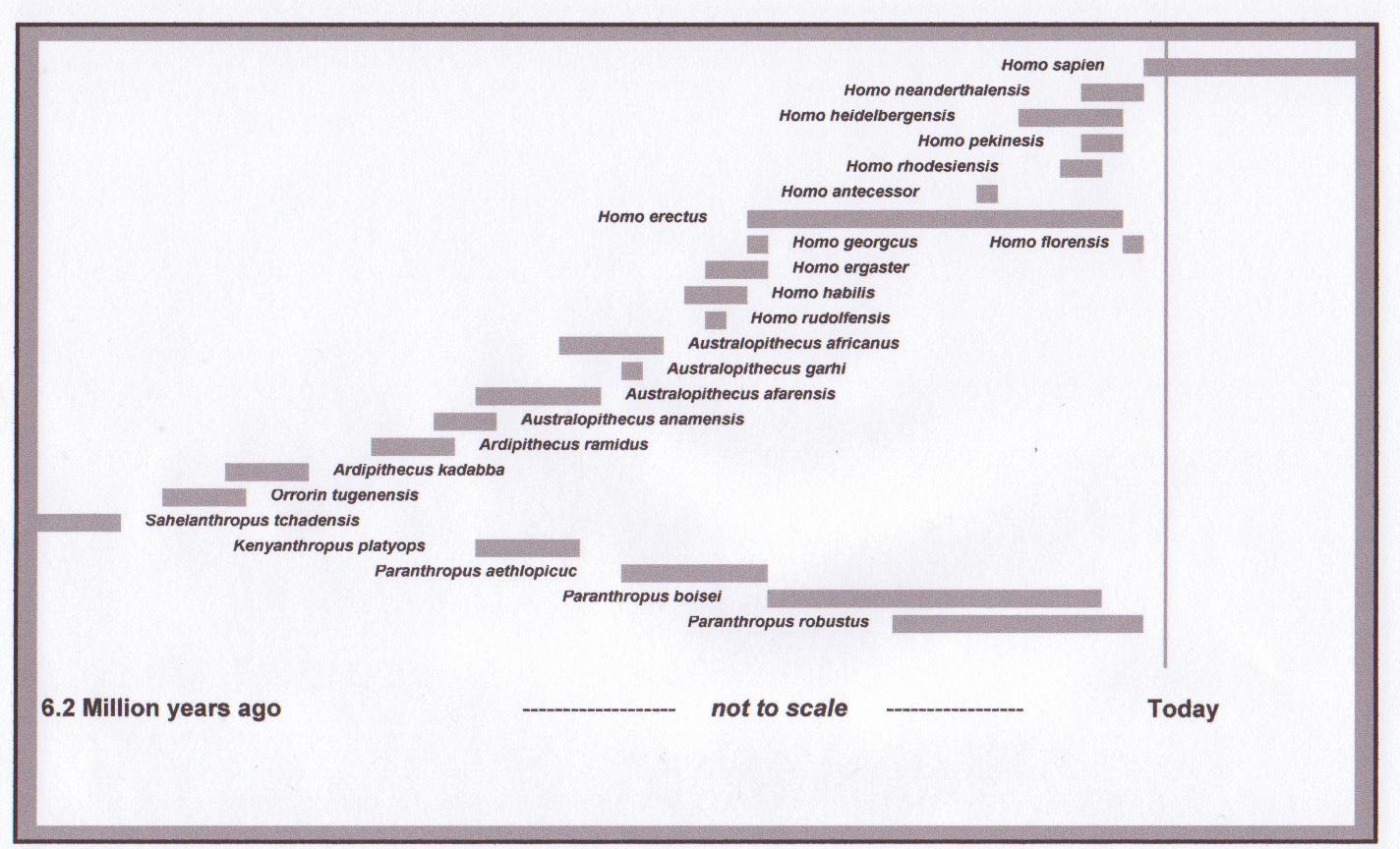Incremental Creation
An academic circumspection
David Freed MLS (ASCP)cm
Febuary 16th, 2011
Just how tight do we hold to our views of Biblical Creation?
There are still fundamentalist that cling to six 24-hour days. These believers
would say that God is so amazingly powerful - ALL POWERFUL – OMNIPOTIENT
– that creating everything in six days is well within God’s ability.
I was taught this on Sunday. Wasn’t everyone? When I was younger and open
to the mythology, the omnipotent explanation was easy to swallow. However, filled
with the cynicism that lingers from the years of “church;” even
this explanation seems to contradict itself.
If God is omnipotent then why did it take him 24hrs to do a days worth of creating? Seems like someone omnipotent could have done it all in a fraction of a millisecond, with time to spare. To suggest that it took omnipotent God six whole days, is actually suggesting that God was dragging it out for some reason. An Omnipotent God could have done everything in six nanoseconds. So, I ask:
When God performed his creative day, did it all happen in the first nanosecond of the day; or did some things happen after breakfast, and a few more after lunch, then Dinner and evening, and so on? Incremental creation allows God to perform His creative miracles in a progressive manor that is later rediscovered by man. However, in an attempt to leave God out of the picture, this progressive manner is misunderstood as evolution.
Bible and science are just two different perspectives of the same event, to which, they both witness. Remember, any one perspective, even biblical, never contains the entire truth, but all points to a central truth.
Evolution and The Words of Darwin
The whole notion of evolution has become a mythology of its own. However, just as religious mythology fails to represent its own scripture; so has evolution forgotten its original scripture:
Charles Darwin, Origin of Species, Chapter XV: Recapitulation and Conclusion1 -- “All the individuals of the same species, and all the species of the same genus, or even higher group, are descended from common parents; and therefore, in however distant and isolated parts of the world they may now be found, they must in the course of successive generations have travelled from some one point to all the others.
As according to the theory of natural selection an interminable number of intermediate forms must have existed, linking together all the species in each group by gradations as fine as are our existing varieties, it may be asked: Why do we not see these linking forms all around us? Why are not all organic beings blended together in an inextricable chaos? With respect to existing forms, we should remember that we have no right to expect (excepting in rare cases) to discover directly connecting links between them, but only between each and some extinct and supplanted form.”1
“... The number of intermediate varieties, which have formerly existed on the earth, (must) be truly enormous. Why then is not every geological formation and every stratum full of such intermediate links? Geology assuredly does not reveal any such finely graduated organic chain; and this, perhaps, is the most obvious and gravest objection which can be urged against my theory.”2
“I can answer these questions and objections only on the supposition that the geological record is far more imperfect than most geologists believe. The number of specimens in all our museums is absolutely as nothing compared with the countless generations of countless species which have certainly existed. That the geological record is imperfect all will admit; but that it is imperfect to the degree required by our theory, few will be inclined to admit. If we look to long enough intervals of time, geology plainly declares that species have all changed; and they have changed in the manner required by the theory, for they have changed slowly and in a graduated manner. We clearly see this in the fossil remains from consecutive formations invariably being much more closely related to each other, than are the fossils from widely separated formations.”1
Darwin said, “…an interminable number of intermediate forms must have existed, linking together all the species in each group by gradations ... Why then is not every geological formation and every stratum full of such intermediate links? Geology assuredly does not reveal any such finely graduated organic chain; and this, perhaps, is the most obvious and gravest objection which can be urged against my theory.” Confident in his theory, he acknowledges the limitations of paleontology in 1859, and hopes future discoveries would eventually locate enough of his missing intermediate forms to validate his theory.
Intermediate Forms – Missing Links
The term “Missing Link” has been morphed by the mythology to mean
that one creature ½ Ape and ½ Man. Yet, even Darwin predicted,
“... The number of intermediate varieties, which have formerly existed
on the earth, (must) be truly enormous.”1 So, evolution shouldn’t
be looking for “the” missing link, they should be looking for any
missing link.
Darwin was absolutely correct in
thinking the science of paleontology had only begun to uncover the evidence.
The very word “paleontology” wasn’t added to the dictionary
until 1820s, only thirty years, or so, before Darwin was published. Since then,
the science has exploded with discoveries, both from the fossil record and from
computer generated modeling. The fossil record today has literally millions
more samples of fossil evidence, complete with more individual species and from
different time periods.
The conclusions from the evidence, “The fossil record itself provided
no documentation of continuity -- of gradual transitions from one kind of animal
or plant to another of quite different form.” (Stanley, S. M., The New
Evolutionary Timetable: Fossils, Genes, and the Origin of Species, 1981,p. 40,
Basic Books, Inc., Publishers, N.Y)3
“The absence of fossil evidence for intermediate stages between major transitions in organic design, indeed our inability, even in our imagination, to construct functional intermediates in many cases, has been a persistent and nagging problem for gradualistic accounts of evolution.” "Is a new and general theory of evolution emerging?" (Gould, S.J., Maynard Smith, J. (editor), Evolution Now: A Century After Darwin, 1982, p. 140, W. H. Freeman and Co. in association with Nature)4
“There are all sorts of gaps: absence of gradationally intermediate 'transitional' forms between species, but also between larger groups -- between, say, families of carnivores, or the orders of mammals. In fact, the higher up the Linnaean hierarchy you look, the fewer transitional forms there seem to be.” (Eldredge, N., The Monkey Business: A Scientist Looks at Creationism, 1982, pp. 65-66, Washington Square Press)5
“Gaps between higher taxonomic levels are general and large.” (Raff, R. A. and Kaufman, T. C., Embryos, Genes, and Evolution: The Developmental-Genetic Basis of Evolutionary Change,1991, p. 35, Indiana University Press)6
"Moreover, within the slowly evolving series, like the famous horse series, the decisive steps are abrupt and without transition." (Goldschmidt, Richard B. "Evolution, As Viewed By One Geneticist,” 1952, pp. 84-94, American Scientist, Vol. 40, No. 1)7
In fact, "As is now well known, most fossil species appear instantaneously in the fossil record." (Kemp, Tom: Curator of Zoological Collections at the Oxford University Museum, "A Fresh Look at the Fossil Record," 1985, p. 66, New Scientist, Vol. 108, No. 1485)8
“Most families, orders, classes, and phyla appear rather suddenly in the fossil record, often without anatomically intermediate forms smoothly interlinking evolutionarily derived descendant taxa with their presumed ancestors.” (Eldredge, N., Macro-Evolutionary Dynamics: Species, Niches, and Adaptive Peaks, 1989, p. 22, McGraw-Hill Publishing Company, New York)9
An estimated 75 to 100 phyla appear explosively at the base of the Cambrian. Fossil evidence suggesting their common ancestry is not found in Precambrian rocks. A General Theory of Macrostasis is needed to explain the fossil data and the stability of the higher taxa.10
"The history of most fossil species include two features particularly inconsistent with gradualism:
1) Stasis - most species exhibit no directional change during their tenure on earth. They appear in the fossil record looking much the same as when they disappear; morphological change is usually limited and directionless;
2) Sudden appearance - in any local area, a species does not arise gradually by the steady transformation of its ancestors; it appears all at once and 'fully formed'." (Gould, S.J., "Evolution's Erratic Pace," 1977, Natural History, vol. 86, May)11
The Power of the Mythology
The mythology of evolution employs the visual media to perpetuate its false
assumption. Many posters and images clearly indicate a smooth unbroken progression
of the species all the way up the evolutionary ‘Tree of Life.’ However,
pretty these images are, they do not represent the data at hand. The data suggest
that species appeared suddenly, lived without changing, and then completely
died out.
The data looks like this:
The data suggest that species appeared suddenly, lived without changing, and then completely died out. Although, the data represented above agrees in scope, notice that in detail there is still much disagreement, especially in the timeline.
Another startling revelation made clear from this fossil evidence is that around the time Homo sapiens first appeared in the record, there is the possibility that two to eight different Humanoid species shared the planet at the same time. If there was any compression of the time line at all, then these 2 to 8 different humanoid species could have interacted for generations.
Theory of Macrostasis
An estimated 75 to 100 phyla appear explosively at the base of the Cambrian. Fossil evidence suggesting their common ancestry is not found in Precambrian rocks. A General Theory of Macrostasis is needed to explain the fossil data and the stability of the higher taxa.
Evolution has a hard enough time justifying the primordial conditions necessary for the first group of amino acids to congeal together to spontaneously created life. How can it possibly deal with millions of spontaneously creative events that generated the fossil record? Scientist struggle for new theories to explain it all, and all the while, scripture is in complete agreement with the evidence.
Incremental creation
I will argue that even the six-day fundamentalists are dealing with six increments of time. The creation story has God creating several different things each day. Isn’t that just several more increments to the process? There is only one truth. All factual data must support that truth. The fossil record does not support Darwin. Even worse, the fossil record does not support the mythology of evolution by natural selection.
Instead, the fossil record actually indicates that the different species: began independently and suddenly, lived without changing, and then died out. The evidence clearly established that species: do not share a common ancestor. Missing links for any species have never been found; instead, the different species began independently, in sporadic increments throughout our past.
Biblical biological creation states that God began with simple forms, incrementally creating more complex forms, then some really big forms, and then man. Followed by a mass extinction event that culled life on earth.
Science has the data indicating life began simply, became more complex, and eventually the dinosaur dominated the planet. Followed by a mass extinction event that culled life on earth and then came man.
Are these two different paradigms really all that different? They are certainly closer in agreement with one another than either is with Darwin.
The Big Bang of Genesis
Gen 1:1-2 “ In the beginning God created the heavens and the earth. Now the earth was formless and empty, darkness was over the surface of the deep,…”
Gen 1:10 “God called the dry ground "land," and the gathered waters he called "seas." NIV12
Science tells us, it all started with an enormous Big Bang; followed by The Nebular Hypothesis and Planet Formation Theory. The Big Bang filled empty space with elemental dust that collected together to form Suns and Stars, with the remaining particulate matter, around each sun and star, then collecting to form the planets.
Gen 1:11 Then God said, "Let the land produce vegetation: seed-bearing
plants and trees on the land that bear fruit with seed in it, according to their
various kinds…."
Gen 1:12 The land produced vegetation: plants bearing seed according to their
kinds and trees bearing fruit with seed in it according to their kinds….
Gen 1:20 And God said, "Let the water teem with living creatures, and let
birds fly above the earth across the expanse of the sky."
Gen 1:21 God created the great creatures of the sea and every living and moving
thing with which the water teems, according to their kinds, and every winged
bird according to its kind. …
Gen 1:24 And God said, "Let the land produce living creatures according
to their kinds: livestock, creatures that move along the ground, and wild animals,
each according to its kind…."
Gen 1:25 “God made the wild animals according to their kinds, the livestock
according to their kinds, and all the creatures that move along the ground according
to their kinds. ...”
Gen 1:27 “… God created man…” NIV
The fossil record as presented, is actually in closer harmony with scripture than any form of evolution theory. The sequence of creation is consistent between both paradigms. Also consistent are the spontaneous and sudden appearance of the species, and each specie keeping to its own kind, both concepts at odds with Darwin.
The Point
Each individual must Ponder their own conclusions. My point here is not to prove a correlation between scripture and science. However, it is my mission to show that these two warring factions, scripture and science, are not in conflict with one another.
Shakespeare asked the question,
“What is in a name?” The process that populated our planet with
life happened the way it happened; regardless of what you call it, Creation,
Natural Selection, or Evolution. However, with the evidence at hand, Incremental
Creation serves as the best-fit description of that process. Satisfying the
fossil record and scripture, complete with incremental creative surges throughout
the time line.
References:
1 Charles Darwin, Origin of Species, Chapter XV: Recapitulation
and Conclusion
2 Charles Darwin, Origin of Species, Chapter X; On the Imperfection of the Geological Record
3 Stanley, S. M., The New Evolutionary Timetable: Fossils, Genes, and the Origin
of Species, 1981,p. 40, Basic Books, Inc., Publishers, N.Y3
4 Gould, S.J., Maynard Smith, J. (editor), Evolution Now: A Century After Darwin,
1982, p. 140, W. H. Freeman and Co. in association with Nature
5 Eldredge, N., The Monkey Business: A Scientist Looks at Creationism, 1982,
pp. 65-66, Washington Square Press
6 Raff, R. A. and Kaufman, T. C., Embryos, Genes, and Evolution: The Developmental-Genetic
Basis of Evolutionary Change,1991, p. 35, Indiana University Press
7 Goldschmidt, Richard B. "Evolution, As Viewed By One Geneticist,”
1952, pp. 84-94, American Scientist, Vol. 40, No. 1
8 Kemp, Tom: Curator of Zoological Collections at the Oxford University Museum,
"A Fresh Look at the Fossil Record," 1985, p. 66, New Scientist, Vol.
108, No. 1485
9 Eldredge, N., Macro-Evolutionary Dynamics: Species, Niches, and Adaptive Peaks,
1989, p. 22, McGraw-Hill Publishing Company, New York
10 Charles Darwin, On the Orgin of Staaia, 1859,
11 Gould, S.J., "Evolution's Erratic Pace," 1977, Natural History,
vol. 86, May
12 The Thompson Chain-Reference Bible, New International Version, 1990 edition,
The B. B. Kirkbride Bible Company Inc. Indianapolis, IN



